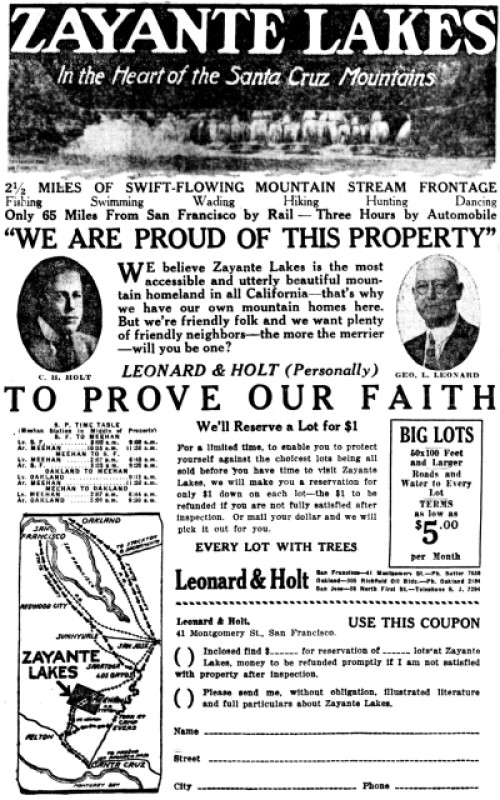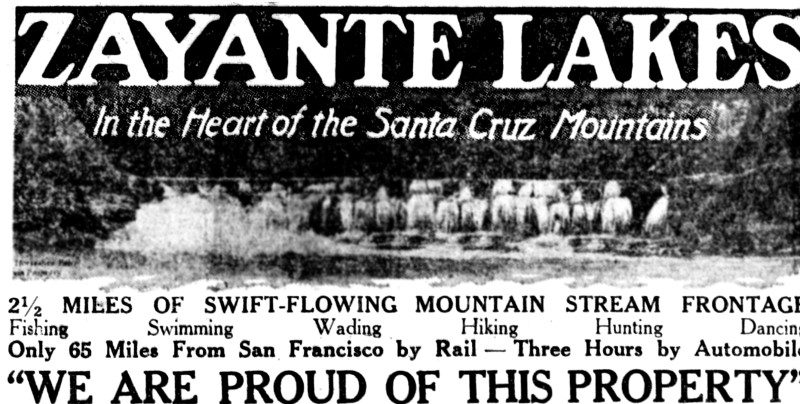Streetwise: The Community of Zayante
By Lisa Robinson
East and West Zayante Road, Zayante Creek, and the community of Zayante are named for the Awaswas speaking people, the Sayant, who lived and managed the land prior to Western contact. The area is part of the traditional territory of today’s Amah Mutsun Tribal Band.
In 1769, the Portola Expedition “discovered” and named the San Lorenzo River for Saint Laurence. They gave the name Costanoa, meaning “coast people,” to the indigenous people that lived here. In 1791, Mission Santa Cruz, or Holy Cross, was established. It was the 12th Alta California mission. Between 1791 and 1795, 54 neophytes from the Sayant village were baptized, of which just six were parents.
Records indicate that most neophytes at the mission were forcibly detained, poorly treated, and their way of life obliterated. The Santa Cruz Mission gained the moniker “the Hard Luck Mission” because of its troubled history. Its population was the smallest of the 21 missions and it shrank from a peak of 523 in 1796 through flight, and death from disease and maltreatment.
After Mexico won independence from Spain in 1821, it could not afford the missions, and in 1834, Mission Santa Cruz was one of the first to be secularized. The indigenous people that had been brought to the mission found it impossible to return to their former way of life. Much of their ancestral land had been awarded as Mexican Land Grants. Three such grants were awarded in the San Lorenzo Valley, including Rancho Zayante to Joaquin Buelna in 1843.
William Ware, an Irishman who settled in Santa Cruz County in 1836, resided with his wife Twaneeya on the Zayante Ranch. She has been referred to as the last of the Zayante. When she died, she was buried in Felton Grove. At one time her gravesite had a marker, undoubtedly now washed away with one of the Felton Grove floodings.
The Zayante School District was formed in 1885 to serve the families of Dougherty’s Zayante Mill. There were fifty school aged children in the district. The mill was on the South Pacific Coast line between Alameda and Santa Cruz and a railroad stop named for the mill became their shipping depot. After the mill closed, the station was renamed Zayante and later Meehan, though the name Zayante was re-used for a station one stop to the north.
In June 1925, the San Francisco Examiner announced: “Leonard & Holt buy tract in Santa Cruz Mountains – 500 wooded acres to be open July 4.” The tract would become known as Zayante Lakes Park. It was bisected by the railroad with two and a half miles of frontage on Zayante Creek, and formerly part of Dougherty’s Santa Clara Valley Mill and Lumber Company land, “dotted with redwood, madrone, elder, giant fern and wildflowers of all kinds.” The investors stated that improvements well into six figures would be made, such as a complete water system and a broad new county road paralleling the Zayante Creek. “… this new subdivision will be one of the highest class mountain home and camping sites in the entire State of California …”

Lisa Robinson is the Collections and Exhibitions Curator at the San Lorenzo Valley Museum. She writes about the street names in the San Lorenzo Valley and explores the history hidden in their names.
Photo contributed by SLV Museum
The San Lorenzo Valley Post is your essential guide to life in the Santa Cruz Mountains. We're dedicated to delivering the latest news, events, and stories that matter to our community. From local government to schools, from environmental issues to the arts, we're committed to providing comprehensive and unbiased coverage. We believe in the power of community journalism and strive to be a platform for diverse voices.





